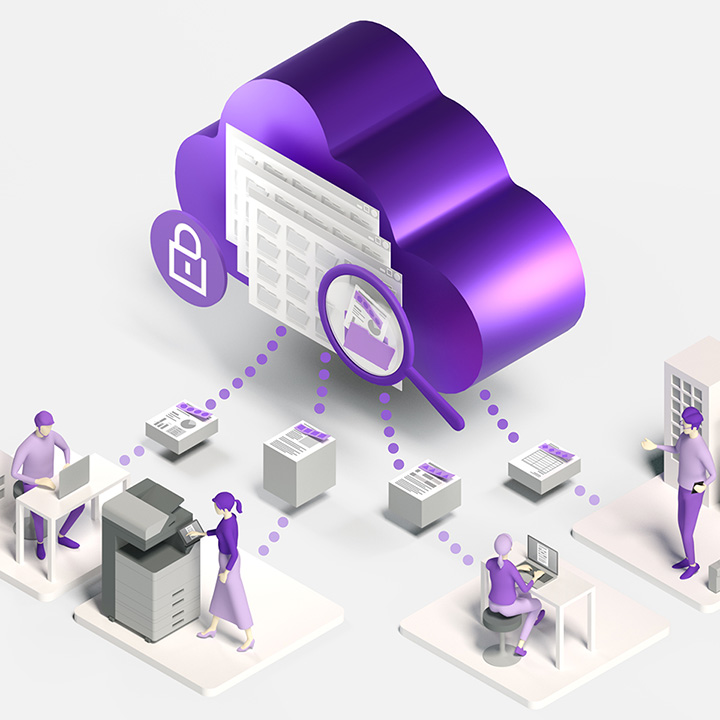What is the open-source cloud phenomenon?

If you don’t already know the term “open-source," you will soon. The free sharing of code means that the open-source concept is taking over the software industry, providing new opportunities across the board. One area where this is particularly relevant is in cloud technology.
What is it?
Simpy put, open-source software is software where the source code used to create the program is freely available for the public to view, edit, and redistribute as they wish. The trend emerged as a way of providing quality products, for free, to people who would not usually have been able to access and use this kind of technology to its full potential.
According to the Open Source Initiative, there are 10 criteria that software must comply with in order to be considered open source, one being the freedom to redistribute without royalties, and also the inclusion of the source code with the program, for example.
Access to the source code allows you to use the software however you want; you can modify and release your own customized versions of the program without having to pay royalties. Not only is this good news for software developers, but for users as well, giving them freedom they would not otherwise have had.
Red Hat’s The State of Enterprise Open Source report revealed that a majority of IT leaders, specifically 82%, are inclined towards choosing a vendor who actively participates in the open source community. Additionally, around 80% of enterprises have expressed their intention to expand their utilization of enterprise open source software for emerging technologies in the near future.
Improving cloud management
The rise of open-source software has led many businesses to rethink their cloud strategy - moving beyond the initial planning and experimentation phases to implementing highly customized environments. According to a recent report by the International Data Corporation (IDC), businesses in Southeast Asia are increasingly adopting cloud technology, even in the post-pandemic landscape. The report found that cloud spending has remained strong and is enabling enterprises to implement new digital capabilities and business models. Vietnam leads the way in cloud adoption with a Compound Annual Growth Rate (CAGR) of 32% from 2018 to 2023, followed closely by Indonesia and the Philippines with a CAGR of 31%. Malaysia, Singapore, and Thailand also demonstrated significant growth in cloud adoption, with CAGRs ranging from 22% to 26%.
Increased proficiency in cloud usage has given companies the confidence to adopt more complex strategies that are aimed at squeezing out every drop of its potential. The Forrester mentioned in The State Of Cloud In Asia Pacific that 91% of Indian infrastructure decision-makers are already using at least one cloud deployment model. Among them, 76% use hybrid cloud, while 92% use multiple public clouds. This indicates that a majority of enterprises in India have adopted a multi-cloud strategy rather than relying on a single vendor, utilizing both hybrid and multiple public cloud deployment models to meet their infrastructure requirements.
The open-source software has been introducing user-friendly solutions to tackle the complexities of the industry, with containerization being one of them. By virtualizing computing and network resources, containers enable applications to operate in any environment, whether it's a cloud or non-cloud, and irrespective of the vendor or type. This versatility simplifies the management of hybrid or multi-clouds, and has been disrupting the industry, making it easier for businesses to manage their infrastructure.
Moving legacy apps to the cloud
One of the biggest obstacles to enterprise cloud adoption is still the issue of legacy applications. These are outdated programs that companies continue to depend on because the switchover to a more up-to-date alternative would be either too expensive or too disruptive. Although they still function in isolation, they are usually incompatible with modern operating systems and other innovations such as the cloud, and therein lies the problem.
Fortunately, containers provide an innovative solution. Docker is a popular, open-source container format, while Kubernetes is a container orchestration platform. As the name suggests, containers are used to contain things, such as legacy apps. All you do is move the app, together with its configuration and operating requirements, to the container. There it thinks it’s still running in its usual environment, even though it’s not. Instead, it runs in a virtualized environment that keeps it isolated from the rest of your IT infrastructure to avoid incompatibility issues.
Containerization, and open-source software in general, is redefining the future of the cloud. The ability to move legacy applications to the cloud without the need to recode explains why 67% of organizations plan to increase their use of containers through 2020, according to Red Hat.
Open-source solutions
The open-source concept’s success lies in the fact that it removes the most common hurdles to cloud adoption in the workplace. It equips businesses with the agility to get the most out of the cloud by offering simple solutions to problems. Containers provide the best example of this, as they create a virtualized environment that allows you to sidestep any incompatibility issues.
As a result, all of your applications will be portable, functioning perfectly on whatever cloud you decide to run them on. Even your legacy applications will work properly, without the need to recode them. Ease the transition to the cloud and unlock its full potential with open-source software.
Cloud technology is the present and future
Learn more about how cloud solutions are taking over businesses and organizations of all kinds.



